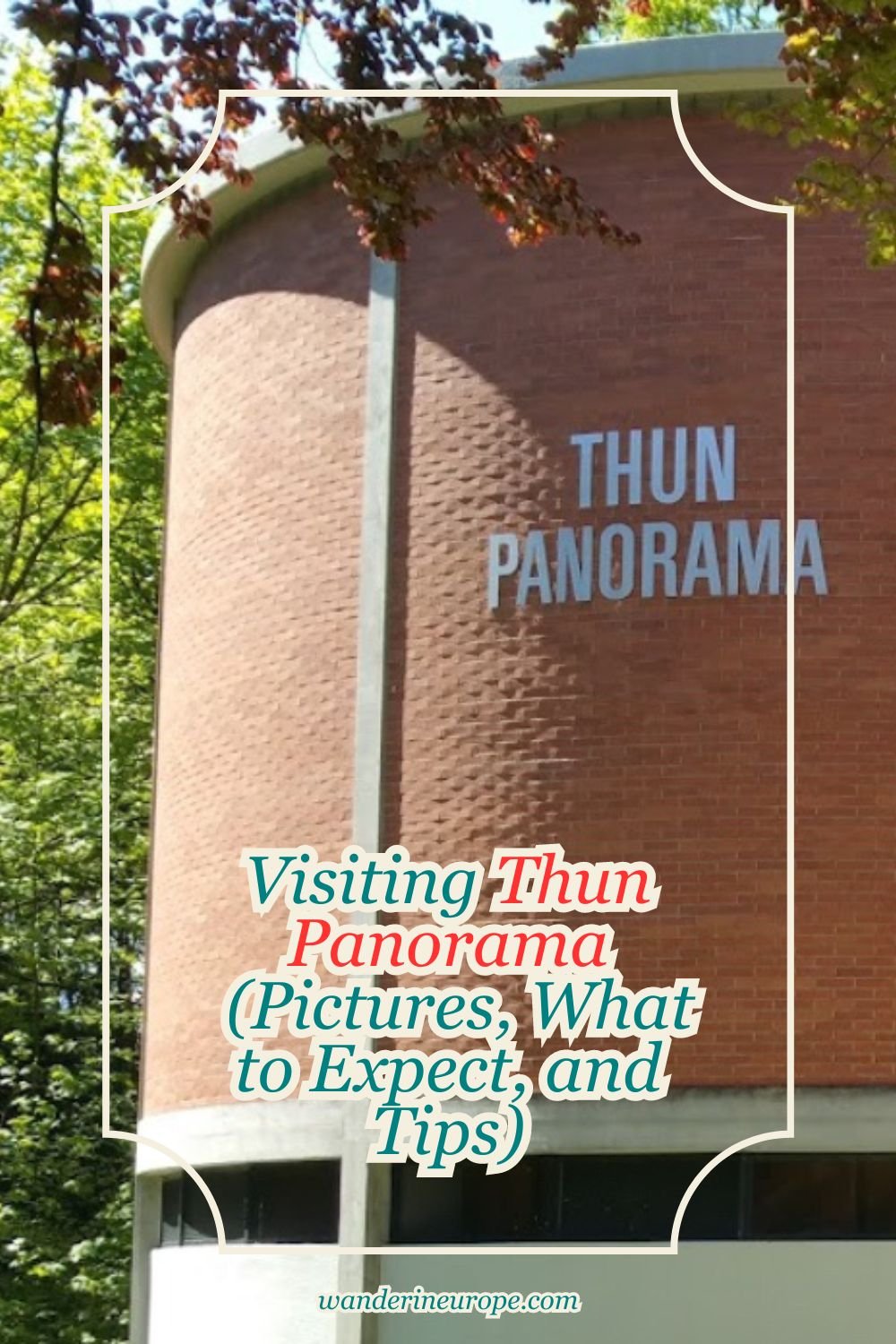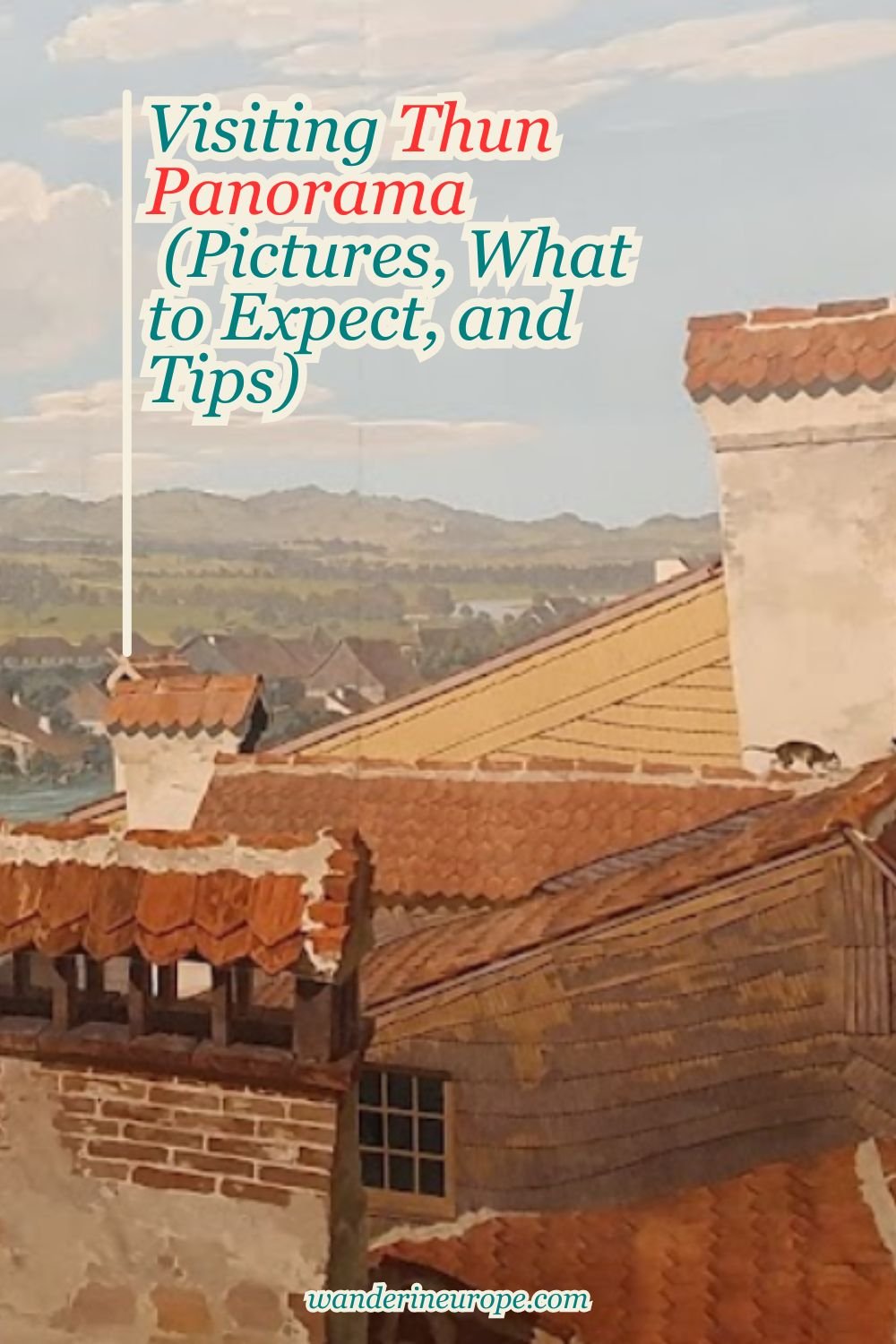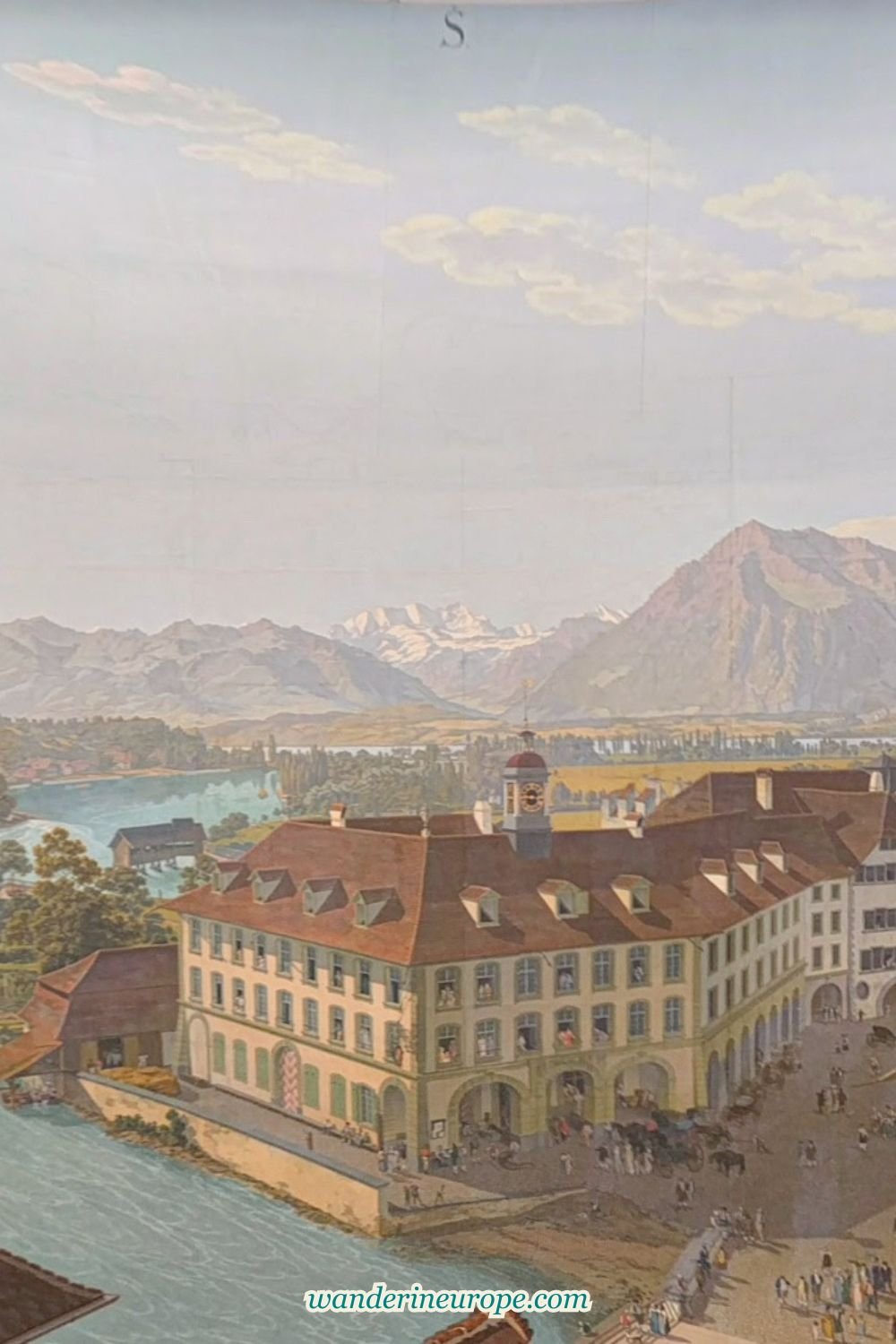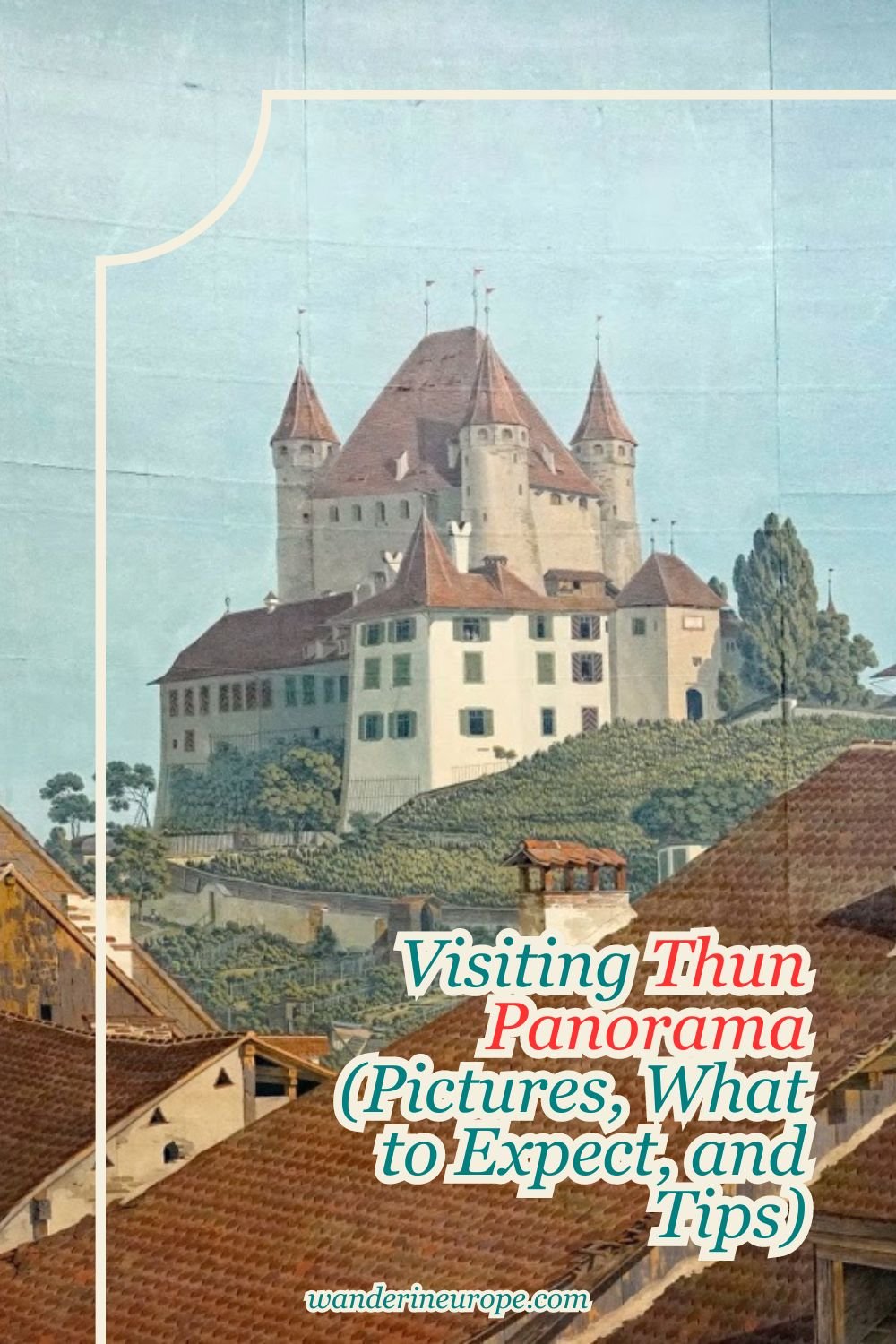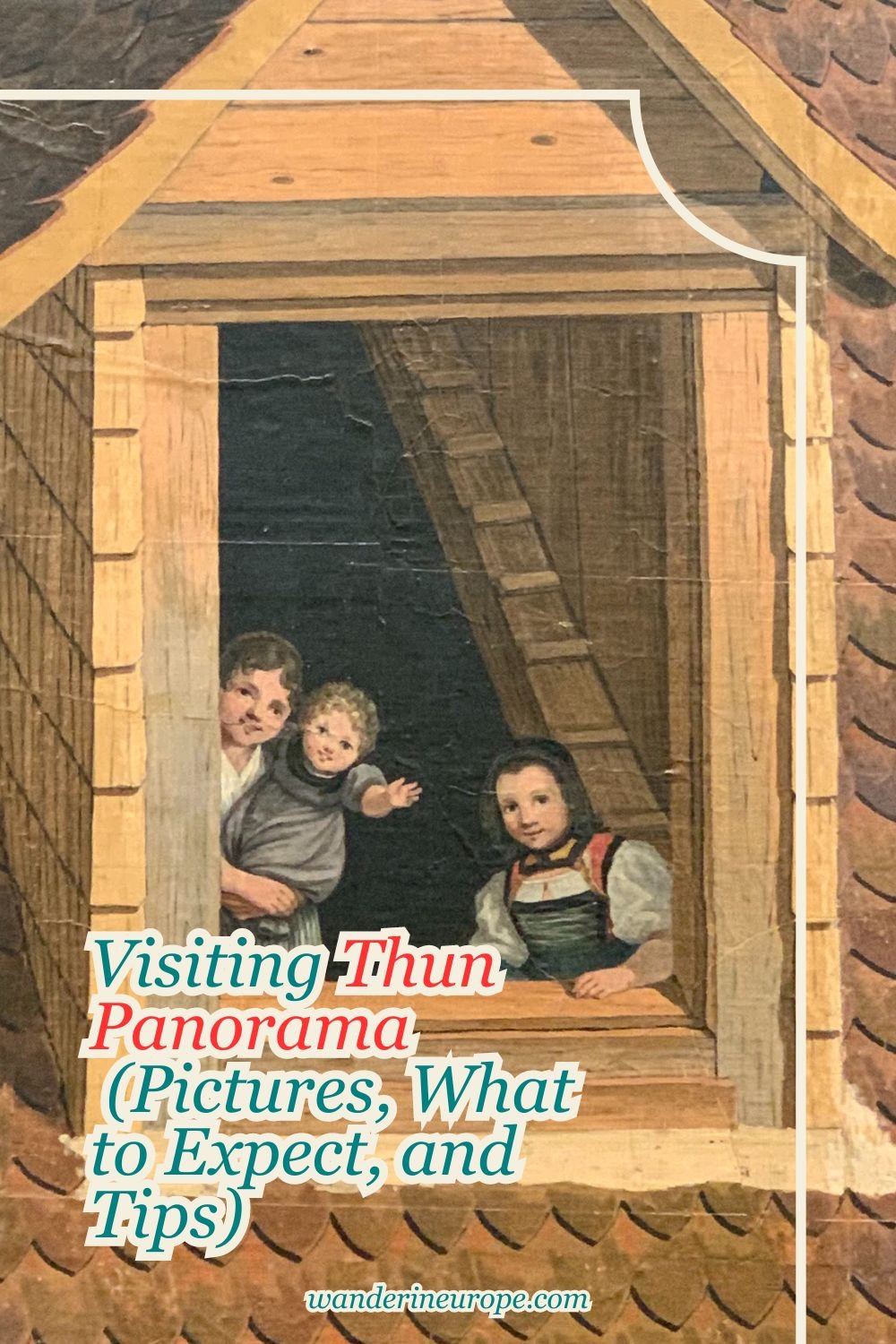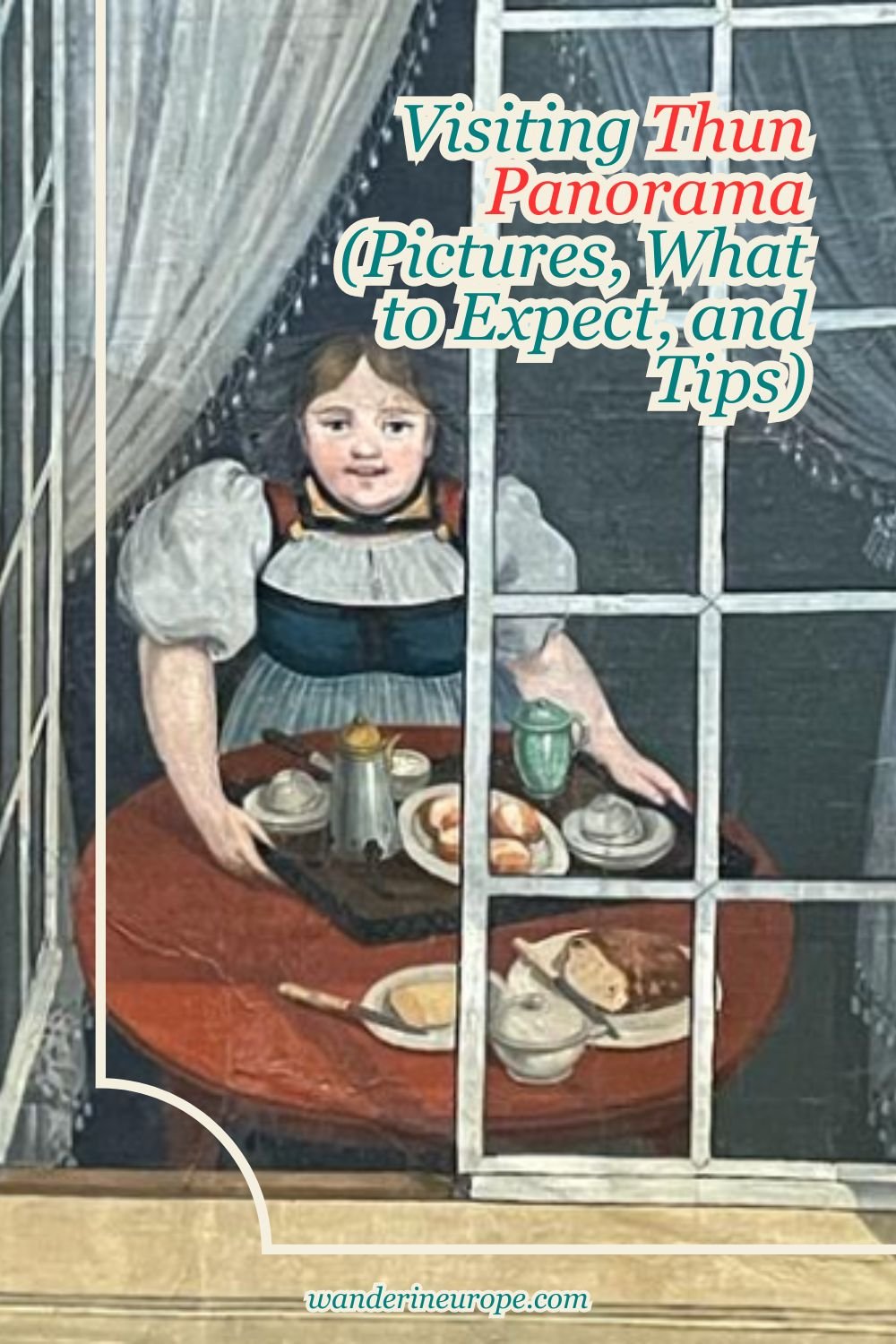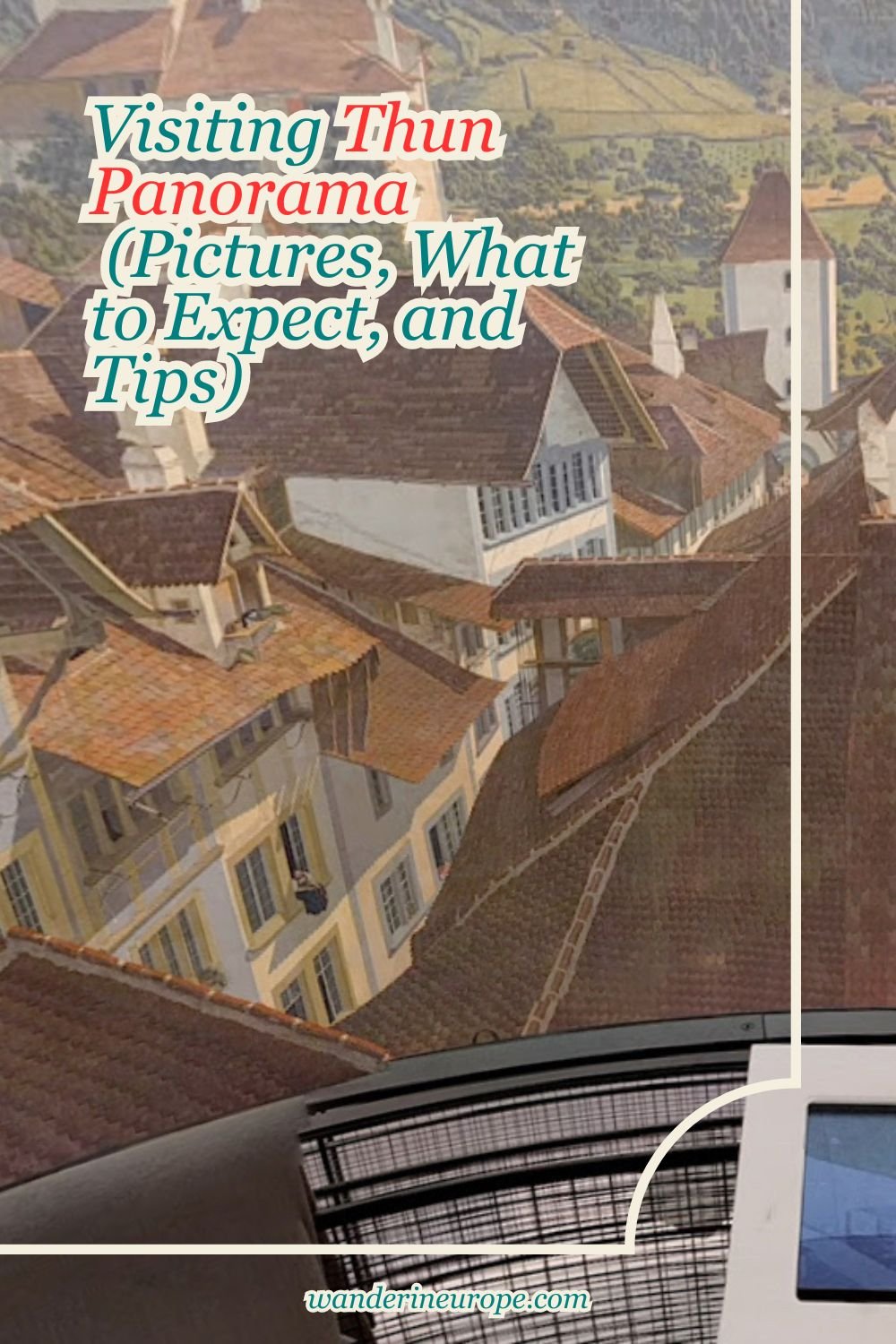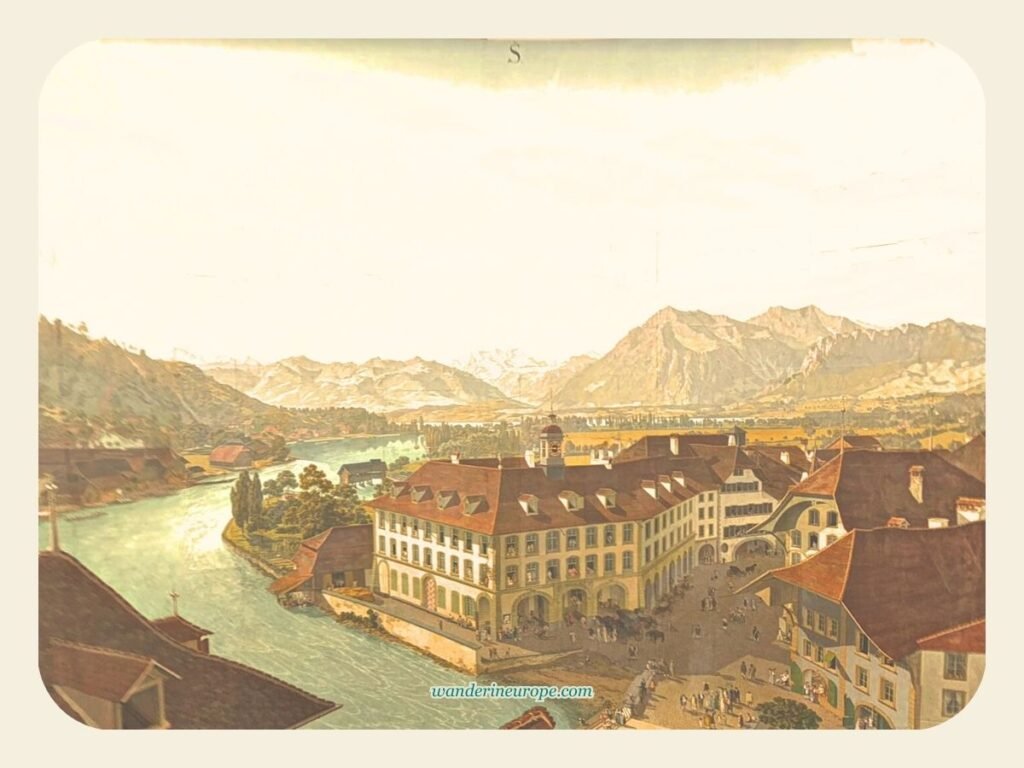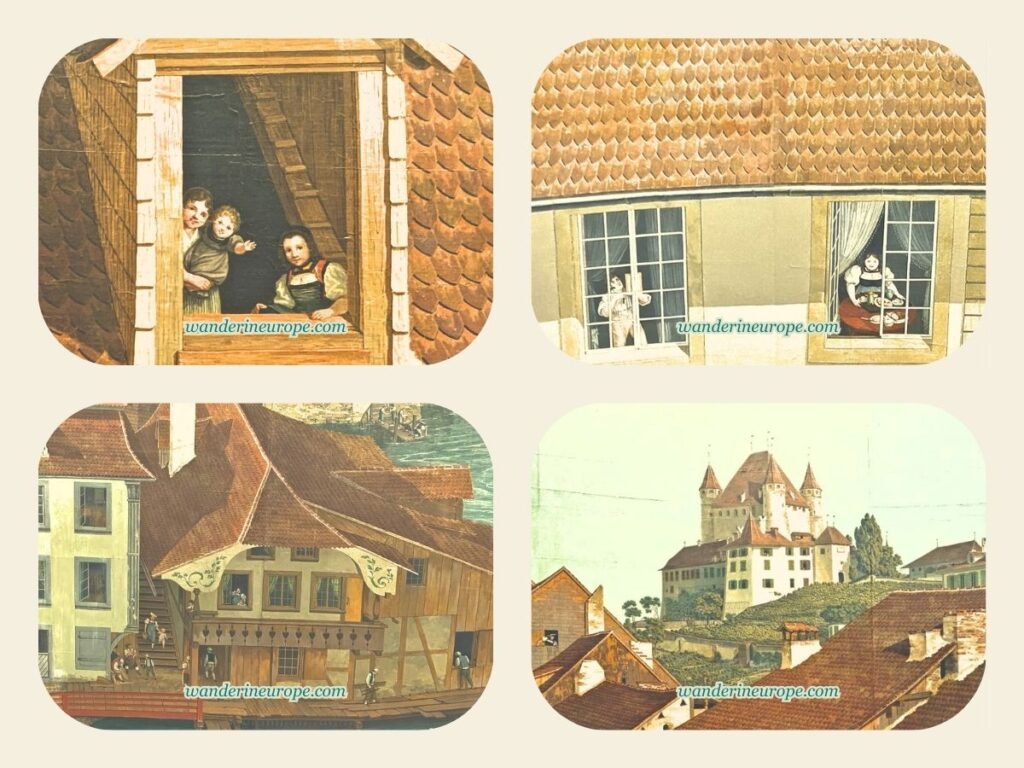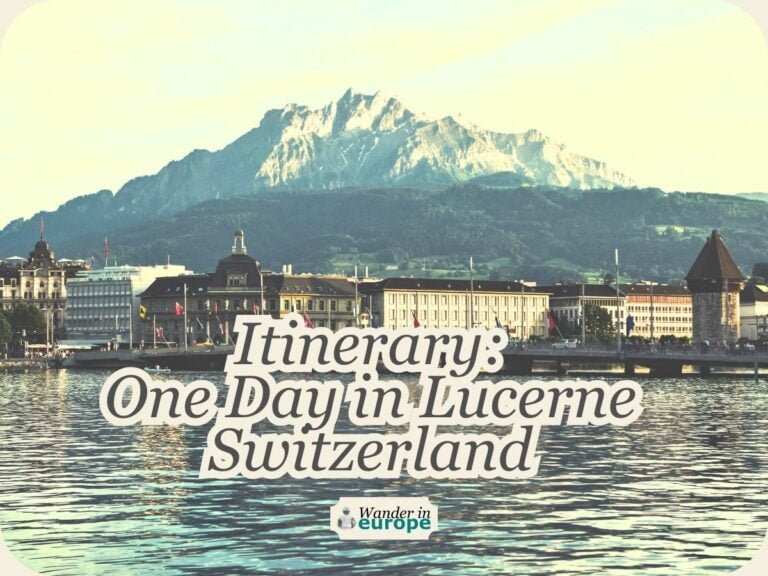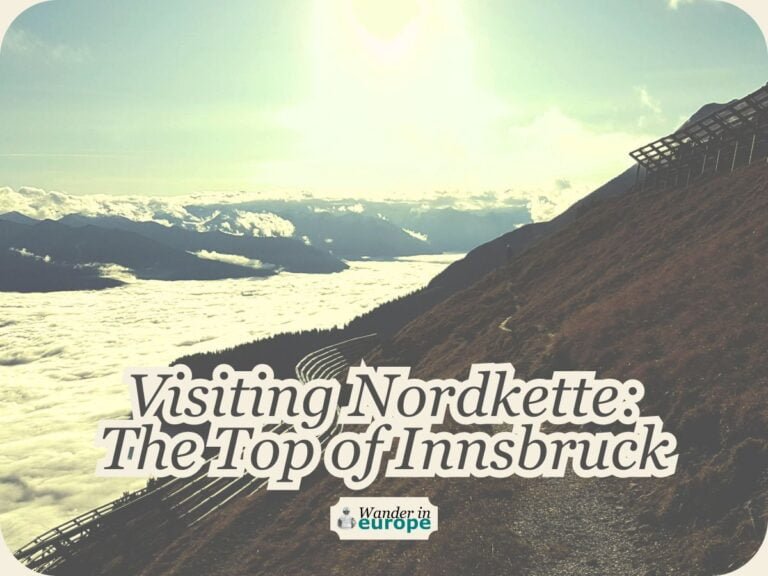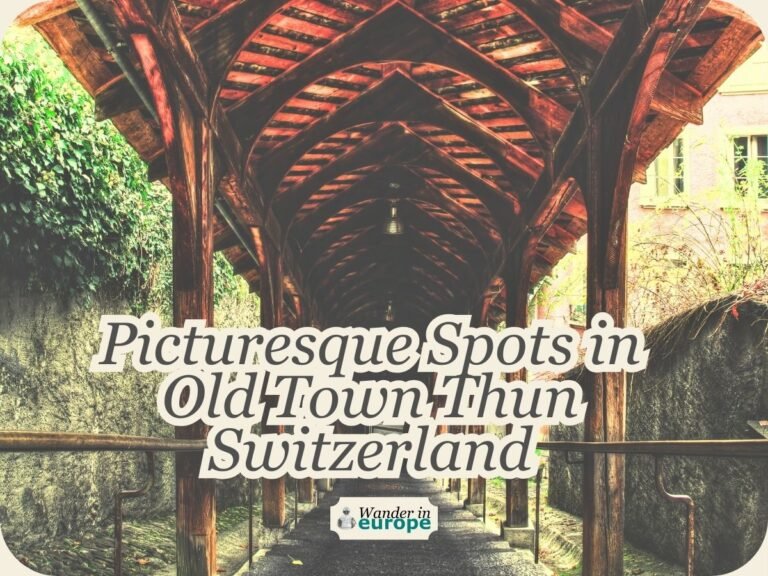Visiting Thun Panorama (Pictures, What to Expect, and Tips)
Notes & Disclaimer: (1) Google seems to be having a hiccup. Please use other search engines to find more guides and articles from WanderInEurope. (2) This website is reader supported. And this post might have affiliate links. This means we could earn a small commission if you make a qualifying purchase. No additional cost to you. More info: Disclosure.
Just like the Bourbaki Panorama in Old Town Lucerne and Tirol Panorama in Innsbruck, the Thun Panorama, or Wocher Panorama is another notable artwork that depicts the Alps. This gigantic painting (7.5 meters by 38 meters), ironically, is a little gem… or perhaps, a hidden gem in Switzerland. Tucked in the idyllic garden of the lesser-known town of Thun, it’s quite literally hidden!
When I was exploring Thun, this panorama was one of the attractions around Lake Thun that really surprised me. I was so amazed when I discovered that it’s the oldest known surviving panorama in the world! For wanderers and anyone looking for beautiful things during their travel, Thun Panorama is among the places I’d always recommend visiting during their trip to Thun, along with Oberhofen Castle and Thun Castle in Old Town Thun.
Thun Panorama pretty much preserves a 360-degree view of Thun and Bernese Oberland from the early 19th century—the time it was created. To be precise, Marquard Wocher painted Thun Panorama from 1809 to 1814 from the rooftop of his apartment in Thun. The way Wocher painted his masterpiece is quite interesting. He included even the smallest and cutest details of Thun in his artwork.
Curious? Let me show you what Thun Panorama looked like.

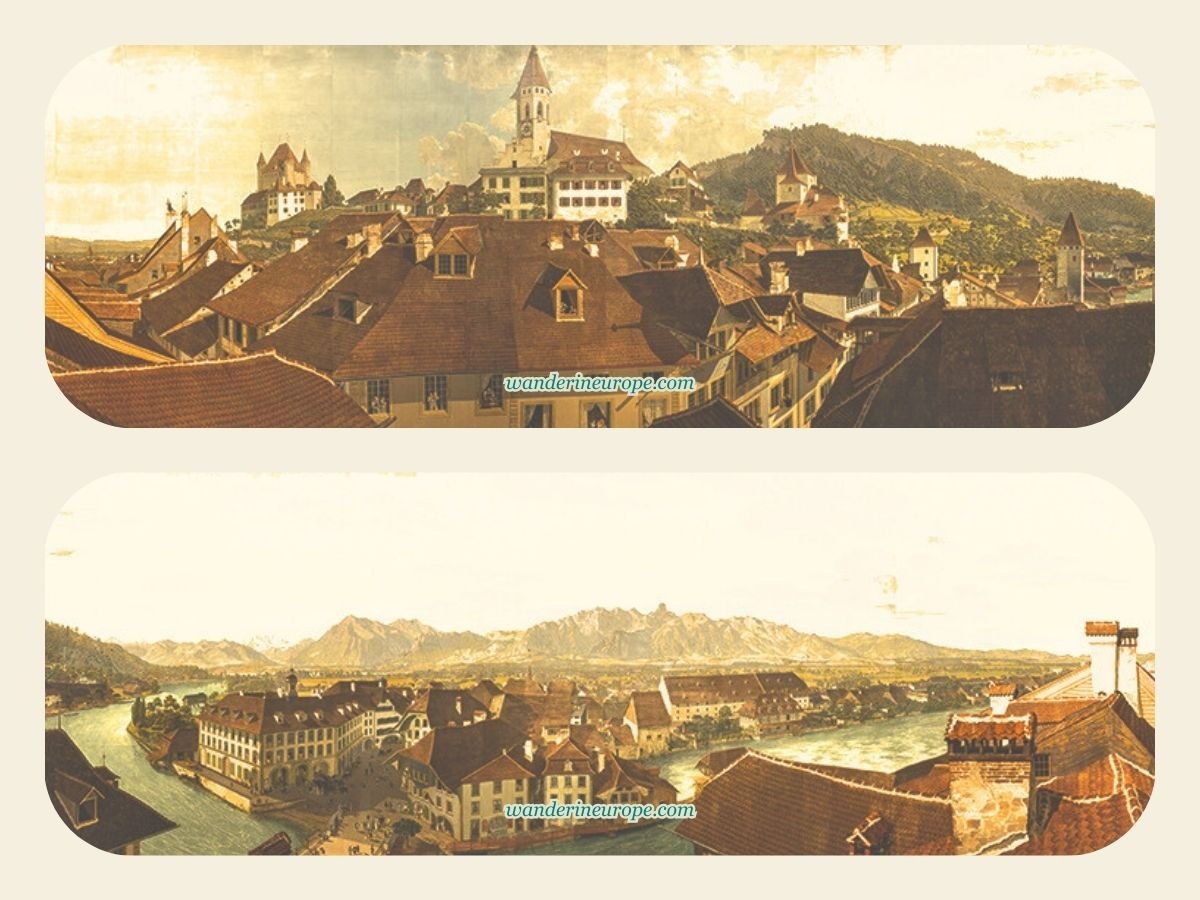

Fun fact: the 360-degree view of Thun preserved in Thun Panorama is the view from the top of the houses along Obere Hauptgasse near Sinnebrücke.
Probably, it’s either the house at Obere Hauptgasse 60, 62, or 64 where Marquard Wocher painted his panorama of Thun. From any of these houses, you can take in an overlooking view of the Aare River and Baliz Island, as well as a direct, unobstructed line of sight with Stadtkirche Thun and Thun Castle — the same parts of Thun that are very noticeable in the panorama.
What to Expect


If you have already visited the Bourbaki Panorama or Tirol Panorama museum, you might want to adjust your expectations for Thun Panorama. In terms of size and historical significance, those two are superior to Thun Panorama. There are also no 3D objects that make the scenery more realistic. However, in my opinion, there are aspects where Thun Panorama stands out uniquely.
Thun Panorama depicts a peaceful scene of the Alps, unlike the tragic scenes shown in the other two panoramas. Inside Thun Panorama, you can see the once small town of Thun, with everyone enjoying their daily lives. Residents are interacting on the streets.
Look closely, and you’ll also see children happily showing off their belongings in the windows of their houses. Animals, like cats, playing on the roofs of the houses. Wocher must have perfectly captured the peaceful nature of the Swiss people. He also beautifully captured the appearance of Mount Niesen and other mountains of the Bernese Oberland!
Interestingly, Wocher also preserved the appearance of parts of Thun that no longer exist. For instance, the defensive towers that once stood near the Aare River and farther behind Schlossberg — the hill where Thun Castle stands. Also, the beautiful traditional Swiss houses in Baliz and along the Aare River. With a bit of imagination, it’s quite a magical experience inside Thun Panorama; indeed, a time-transporting experience. It’s like a time machine, showing you Thun in the early 19th century, frozen in time.
Essentially, you will be standing inside the Thun Panorama when you view the artwork. There is a two-layer circular platform that gives you slightly different perspectives of the panorama. The lower level lets you see the details up close. The upper level is where you learn about the panorama with the help of installed interactive displays. Sitting on the top level can make you feel as if you’re Wocher in the early 19th century, overlooking Thun as he paints his masterpiece.
Good to know: In addition to the displays on the platform, you can borrow audio guides from the reception area, available in multiple languages, to learn more about Thun Panorama. The educational materials inside Thun Panorama also share the story of how the artwork was restored after its discovery in the 1950s.
Just a heads up: Thun Panorama wasn’t air conditioned the last time I checked. So, if you’re visiting in the cold months, make sure to bring your jacket to the unheated viewing area.
How to Visit
Finding the Thun Panorama is not very hard, although it’s not immediately visible when you arrive in Schadau Park — the park where Thun Panorama is located. If you’re going to look at the map, you can find this park near the point where the Aare River and Lake Thun meet. Thun Panorama is somewhat located in the middle of the forested part of the park.
Let’s say you just arrived at the park by riding the bus; you’d first see the Schadau Castle, which is only a stone’s throw away from Thun Panorama. When you see a cylindrical building made of bricks, it’s the Thun Panorama.
Here’s a map of Thun, which highlights its tourist attractions, including Schadau Park. The location of Thun Panorama, as shown on the Schadau Park Map, is provided below:

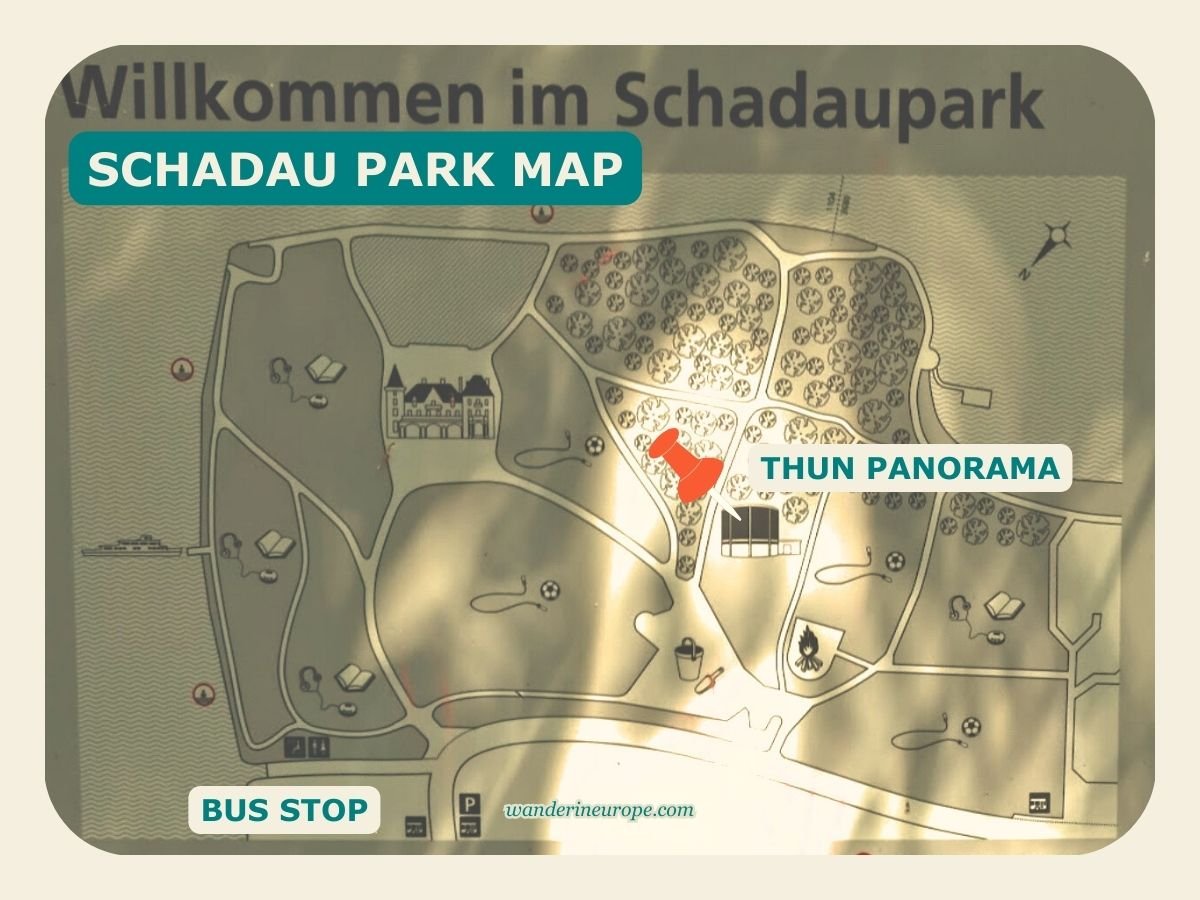

Let’s say you’re at Thun Train Station. You have two options to reach Thun Panorama or Schadau Park: a 15-minute walk or a 3-minute bus ride. If you prefer walking, you can stroll along Seestrasse, the road beside the Thun Ship Canal. It has a tree-covered sidewalk and lovely views of the canal. It’s a pleasant stroll if the weather’s great!
Alternatively, to get to Thun Panorama/Schadau Park, you can hop on bus no. 1 from the train station and get off at the Scherzligen/Schadau bus stop. The bus stop is near Scherzligen Kirche (church), just a few steps from Schadau Park.
How Long To Visit
Depending on how quickly you explore, your visit to Thun Panorama can last anywhere from a few minutes to 45 minutes. This includes viewing the entire panorama and learning about the history of Thun Panorama through videos and audio guides.
There may also be a small temporary exhibition in the building where Thun Panorama is located, which could affect the length of your visit, depending on your interest. It’s important to note that, aside from the panorama and temporary exhibitions, there aren’t many other activities here.
However, if you’re in the mood for snacks, Thun Panorama has a bistro with a wide range of drinks and snacks. It offers indoor and alfresco seating (weather permitting) with lovely views of Schadau Park. Relaxing and eating after viewing the panorama could extend your visit. Before you leave Schadau Park, though, make sure to visit the area between Schadau Castle and Lake Thun. If the weather is perfect, the view is simply breathtaking. You’re sure to love it!

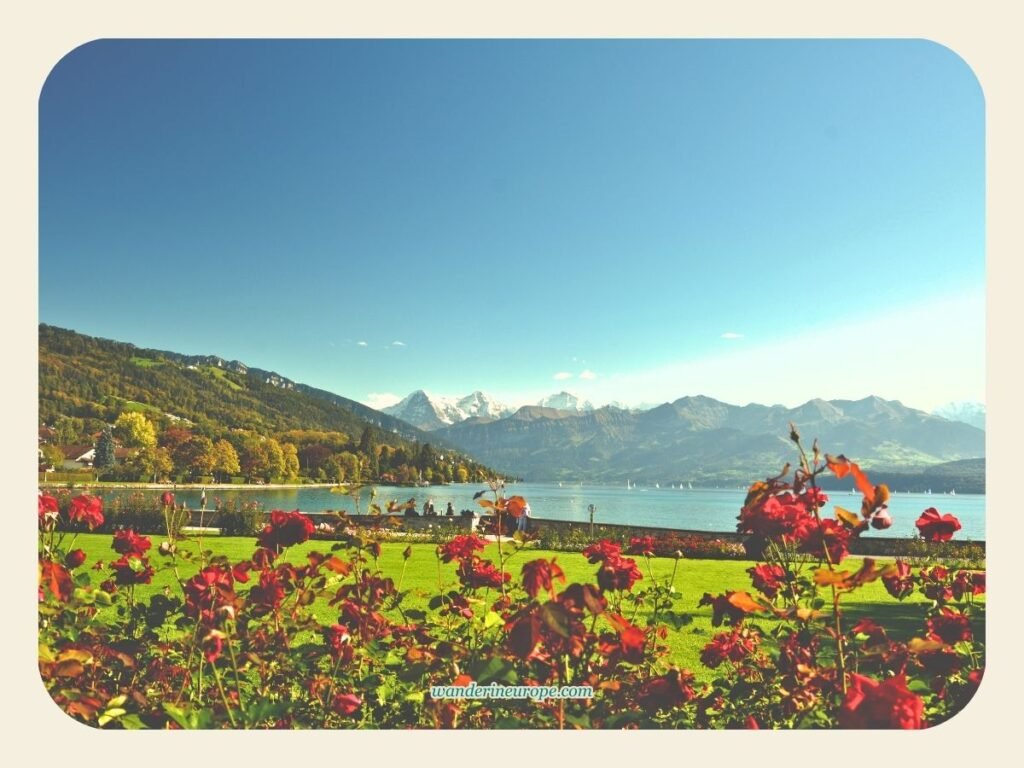

Visiting Information
The last time I checked, Thun Panorama was only open during the non-winter months, typically from the first week of March until the last week of November or the first week of December. During those months, Thun Panorama is open from 11:00 am to 5:00 pm, Tuesday through Sunday.
The admission fee to Thun Panorama is slightly expensive. The last time I checked, it was priced at 9 CHF. However, if you plan to visit Thun Panorama and other tourist attractions in Thun, such as Thun Castle and Kunstmuseum Thun (art museum), you might want to consider purchasing a combined ticket. It’s 15 CHF for the Thun Art Museum and Thun Panorama, or 13 CHF for Thun Castle and Thun Panorama. For updates or announcements, please kindly check the official Thun Panorama website on this post’s resources section.
Please note that the Swiss Travel Pass already covers entry to Thun Panorama and other attractions in Thun. The Swiss Travel Pass is an all-in-one ticket, a nice-to-have pass, for getting around Switzerland and visiting its attractions. This pass covers museums, public transportation, and even special experiences. It’s worth considering if you’re planning an extended weekend trip or a week-long getaway in Switzerland.
Should You Visit?
Overall, Thun Panorama is a unique and interesting artwork that offers visitors a fascinating glimpse into the past. I love the beautiful 360-degree panoramic view of the city and its surrounding landscapes from the 1800s. However, I must mention that the admission price is quite high for such a quick visit and to see only one artwork plus small temporary exhibits.
But if you have a Swiss Travel Pass or any other pass that allows you to see Thun Panorama for free, then I strongly recommend you don’t miss it, especially since this attraction can easily be included in any Thun itinerary. For example, after a walking tour of Old Town Thun, you can visit Thun Panorama and then relax by the shores of Lake Thun in Schadau Park. Check what I did in my one-day Thun itinerary.
However, if you want to see different attractions around Lake Thun and you only have one day, I think it would be better to prioritize other attractions over Thun Panorama. There are many more amazing attractions in Lake Thun to spend more time with, as shown in this one-day Lake Thun itinerary.
Resources
Do you want to learn more about Thun Panorama? You can check this link to Thun Panorama’s official website. From it, you can check the latest visiting hours and know whether there is another exhibition inside the Thun Panorama.
Hello there! I believe you’re planning a trip to Switzerland soon. If you’re in need of a hotel, please use this link to find a place to stay. It’s my partner’s hotel search and booking platform, and the link I’ve just shared with you is an affiliate link. When you book through it, I may earn a small commission at no extra cost to you. Consider it as your donation to WanderInEurope, enabling me to create more insightful and helpful content like this. Thank you for your support! Happy travels 🙂

Thun Panorama is just one of the unique attractions I’ve discovered in Switzerland. Others include Zytglogge (an astronomical clock with automatons) in Bern, Chapel Bridge (the world’s oldest of its kind) in Lucerne, and Lauterbrunnen (a heaven on earth) in the Jungfrau Region. Check them out! 🙂
Links open in a new tab.


